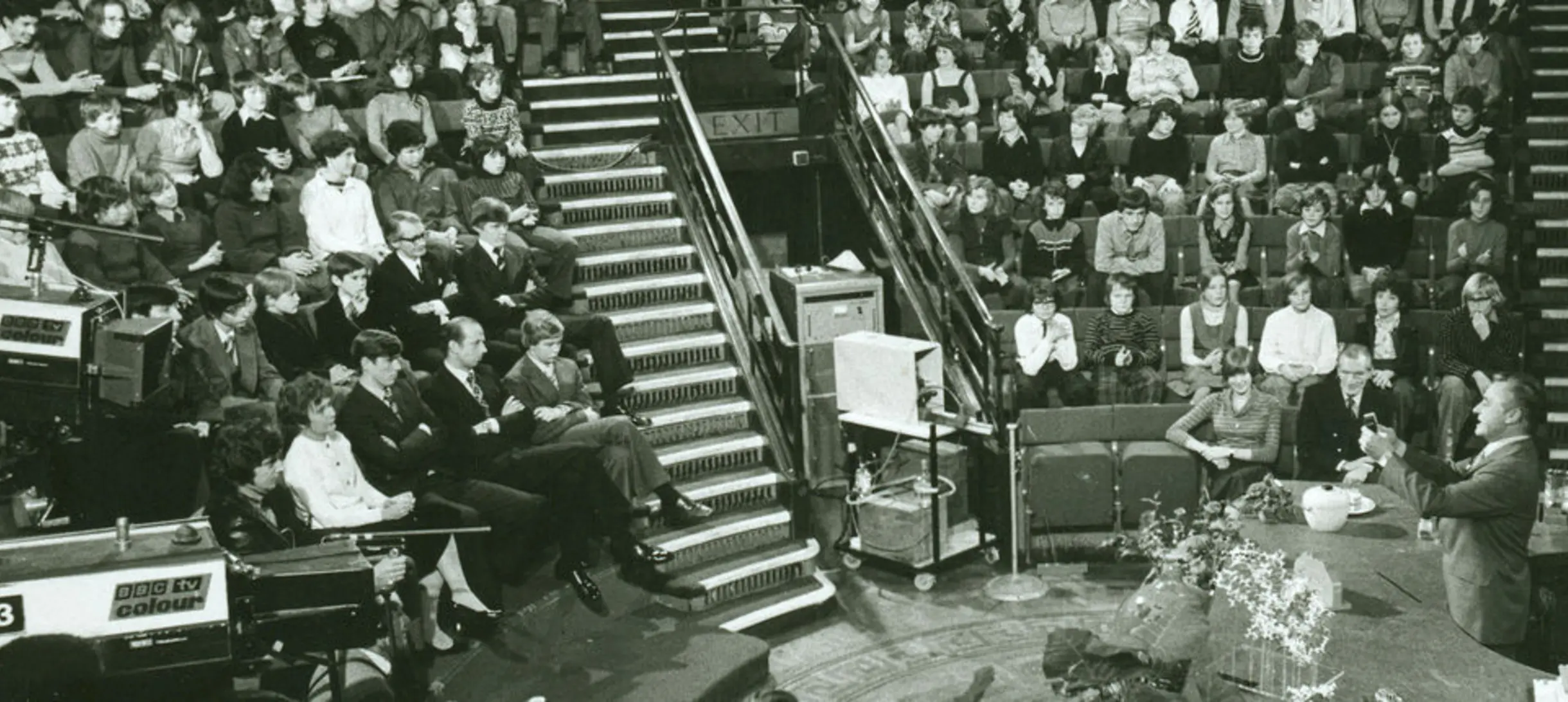CHRISTMAS LECTURES Archive
The BBC archive of the first science show to be broadcast on UK national television is being made available again for new generations from today.
The iconic CHRISTMAS LECTURES from the Royal Institution (Ri) were first broadcast by the BBC in 1936 and have been broadcast every year since 1966.
Until today however, only around half of the CHRISTMAS LECTURES recorded by the BBC had been available for repeat viewing. Now a release plan drawn up by the BBC and the Ri will see the remaining episodes from the BBC archive hosted on the Ri website.
The first series from the archive to be uploaded to the Ri website was delivered by American physicist Phillip Morrison, one of only a handful of non-British Christmas Lecturers, in 1968. It is the oldest series of those yet to be released and hasn’t been available for public viewing for half a century.
The remaining 21 series, of 5 to 6 lectures each, will be released on a monthly basis from now until the end of next year.
Cassian Harrison, Channel Editor for BBC Four, which has broadcast the CHRISTMAS LECTURES since 2010 said: “The CHRISTMAS LECTURES from the Royal Institution have become a family tradition on the BBC, loved by generation after generation. Our archive contains some of the seminal science broadcasts in television history and I am delighted that we are able to make them available again, for anyone to watch, anywhere in the world.”
Prof Gail Cardew, Director of Science and Education at the Royal Institution, said: “The CHRISTMAS LECTURES have been credited by so many of today’s leading scientists, with sparking their fascination with science from an early age. They are an important part of our work to inspire everyone to think more deeply about science and its place in our lives. From today we can enjoy reliving these classic series, that year after year continue to make the very latest scientific knowledge accessible for people of all ages and backgrounds.”
Ian Blatchford, Director of the Science Museum, said: “The CHRISTMAS LECTURES have an iconic place at the heart of public engagement with science in the UK, so it’s wonderful that these rich sources of inspiration and wonder will be available again for new generations.”
The 1968 series of lectures online from today, ‘Gulliver’s Law’ by Phillip Morrison, is the only series still to be released that was filmed in black and white. In charge of testing under the Manhattan Project in 1945, Morrison was one of the few Project members who toured Hiroshima in the months after the bombing, as a result becoming a forceful advocate for international arms control.
In ‘Gulliver’s Law’ he looks at ‘the present day world through the eyes of a voyager from Lilliput,’ considering the scientific accuracy in Jonathan Swift’s famous novel, as well as how different human development might have been, were we the size of the people of Lilliput.
Other highlights from the BBC archive being uploaded to the Ri website in the coming months include:
- The 1981 series, ‘From Magna Carta to Microchips,’ by RV Jones – examining precise measurement as the foundation of our modern industrial society
- The 1997 series, ‘The Magical Maze,’ by Ian Stewart – one of the first series to reduce from 6 to 5 lectures, and only the second time in more than 30 years that mathematics had been the subject of the CHRISTMAS LECTURES. For his work collaborating with Jack Cohen and Terry Pratchett on popular science books based on Pratchett’s ‘Discworld’ series, Ian Stewart was made ‘Honorary Wizard of Unseen University’ by Pratchett
- The 1984 series, ‘The Message of the Genes,’ by Professor Walter Bodmer – considering the extraordinary richness and variety in human life. Professor Bodmer was the first professor of genetics at Oxford University and author of The Bodmer report, widely credited with starting the movement for the public understanding of science
- The 1976 series, ‘The Natural History of a Sunbeam,’ by George Porter – highlighting use of laser to speed up chemical reactions; work that earned Porter, the Director of the Ri and one of only 3 people to deliver more than one series of the CHRISTMAS LECTURES since they were televised, the Nobel Prize in 1967
- The 1994 series, ‘Journey to the Centres of the Brain,’ by Susan Greenfield – considering how what we do, think, feel and experience is related to electrical signals travelling to and from the brain. Susan Greenfield was the first female Christmas Lecturer.
When all remaining series have been uploaded to the Ri website, those available to view will cover the period from 1966, to last year’s Lectures by Professor Sophie Scott.
However 31 Lectures, across 5 series – including one from Sir David Attenborough’s much-loved 1973 broadcasts – are missing. In the Autumn, the Ri and the BBC will join forces again to launch a campaign to locate the missing series, completing the availability of all series broadcast by the BBC.
